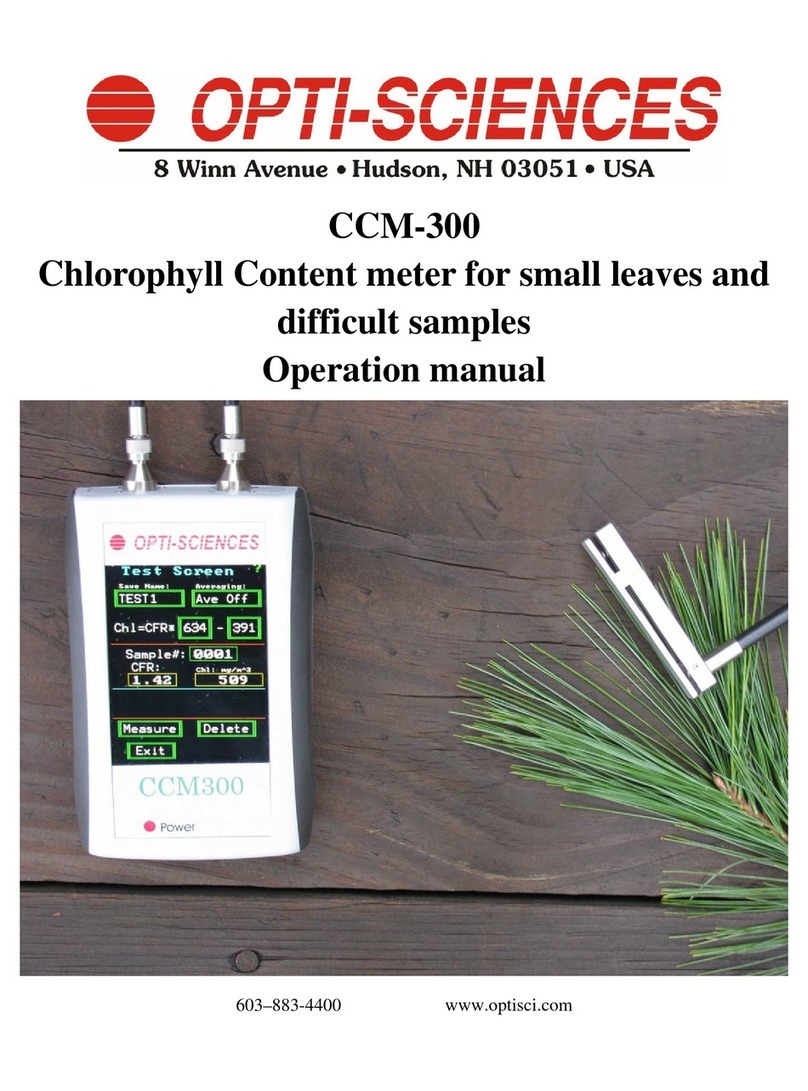
3
Loading and saving preset measuring routines ...........................................................................................73
Other Fv/Fm function buttons......................................................................................................................74
Measurement review ....................................................................................................................................75
Help screen ..................................................................................................................................................75
Basic definitions of parameters....................................................................................................................76
Error messages ............................................................................................................................................76
Y(II) PROTOCOL:QUANTUM PHOTOSYNTHETIC YIELD OF PSII Y(II) OR )F/FM’ ............................................77
Cookbook checklist before making Y(II) measurements. .............................................................................78
Running the Yield of PSII Y(II) Test.............................................................................................................81
Drill down menu for Y(II) ............................................................................................................................82
Loading and saving preset measuring routines ...........................................................................................83
Copy presets parameters into measuring file...............................................................................................84
Change Y(II) measuring parameters............................................................................................................85
Setting modulation light source intensity.....................................................................................................85
New -automated modulation light set up .....................................................................................................86
Setting the saturation pulse intensity ...........................................................................................................86
Setting saturation pulse duration.................................................................................................................86
Multi-flash vs. standard single flash saturation pulse .................................................................................89
Far red light.................................................................................................................................................91
Pre-actinic light ...........................................................................................................................................92
Entering a note with a measurement............................................................................................................94
Other Y(II) or yield function buttons............................................................................................................95
Measurement review ....................................................................................................................................96
Help screen ..................................................................................................................................................97
Basic definitions...........................................................................................................................................97
Relative Electron Transport Rate.................................................................................................................98
e capture and quantum eff – setting leaf absorption & PSII ratio...............................................................98
Error messages ............................................................................................................................................99
QUENCHING PROTOCOL –HENDRICKSON –KLUGHAMMER LAKE MODEL:.....................................................100
Cookbook checklist before making quenching measurements..................................................................101
Running the quenching test........................................................................................................................105
Screen drill down diagram for quenching .................................................................................................106
Saturation pulse duration...........................................................................................................................107
Setting saturation pulse duration...............................................................................................................107
Saturation pulse count ...............................................................................................................................109
Saturation pulse interval............................................................................................................................109
Fo’ or Fod mode........................................................................................................................................109
Saturation pulse intensity...........................................................................................................................110
Modulation light source intensity...............................................................................................................111
New -automated modulation light set up ...................................................................................................111
Far red intensity and duration...................................................................................................................112
Actinic intensity..........................................................................................................................................112
Using Default PAR.....................................................................................................................................112
e capture and quantum eff – setting leaf absorption & PSII ratio.............................................................113
Log Set Up..................................................................................................................................................113
Enter a note................................................................................................................................................114
Measurement review ..................................................................................................................................115
Test pre-set files. Saving and loading test parameters...............................................................................116
Error messages common to the test modes ................................................................................................116
RAPID LIGHT CURVES (RCL)...........................................................................................................................118
How they work:..........................................................................................................................................119
Curve fitting software.................................................................................................................................120
Cardinal points description........................................................................................................................120
Saturation Pulse Duration .........................................................................................................................121
What are the limitations of RLC?...............................................................................................................122





























